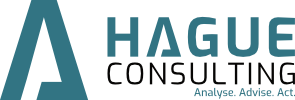Strategic Roadmaps: Unravelling the mystery

In many organisations, there’s an aura of mystique surrounding strategy. It can seem disconnected from the everyday, from business as usual, from what people do. I’ve found this especially true of the “strategic roadmap”, a mysterious document concocted by gregarious people after a session in front of a whiteboard at an off-site somewhere.
Strategic roadmaps tend to show higher-level things in an organisation’s desired future: big decisions, investments and changes. They can be difficult to relate to if you don’t understand the strategy that led to them being drawn up. They tend to be “top-down”, i.e. big ideas first. So, if you don’t know much about those big ideas, the roadmap might not look all that relevant.
It shouldn’t be this way. The strategy of an organisation shouldn’t be mysterious, even slightly. There are exceptions – say, a company trying to get a new product out before competitors. Generally, the chances of your strategy being successful will increase as more people understand and believe in it. External factors can be hard enough to deal with; you need your people behind it.
Strategy comes down to choices. It’s about choosing to do some things, and choosing not to do others. Some of these things will depend on some of the others, because of resourcing, external factors, raw materials and so on. The really big choices, and their start and end points, are what appear on a good roadmap. If you can get people to see where the bits they’re working on add up to things on the roadmap, they’ll understand it. That’s where the business plan comes in. If your business plan goes out far enough, you should see the same things on it, albeit at a different level of detail. Comparing these two documents shouldn’t take more than a couple of hours. It is a very helpful exercise in understanding how well set up you are to succeed.
I once worked in an organisation where the strategic roadmap and business plan appeared to be completely independent of each other. As far as I could see, all the organisation’s resources were committed in the business plan for the coming year. I couldn’t work out how they intended to reach the next milestone on the roadmap. When I asked, I was told different people worked on the two, and they were for different audiences. Fair enough, but that could only work if your executive team could execute the strategy entirely unaided by the workforce or any changes in operations.
Not everyone needs a roadmap. They are really oriented toward long-term strategy execution which is change-focused. If your business is very BAU-focused or reactive – like a bureau or a repair shop – it’s probably less important. If you want your organisation to look, feel or operate differently in the future, however:
- Invest time in developing and testing your strategy
- Determine the critical decisions and their start and end points
- Put these in the roadmap
- Get out and talk to your people about it and how what they’re working on underpins what needs to happen
- Put the thing on the wall
- Keep it up to date
- If there are things in the business plan that don’t add up to a point on the roadmap, make sure you understand why
Bob McNeill, Senior Consultant, Hague Consulting Ltd. © Hague Consulting Ltd 2024
Share this on social media
